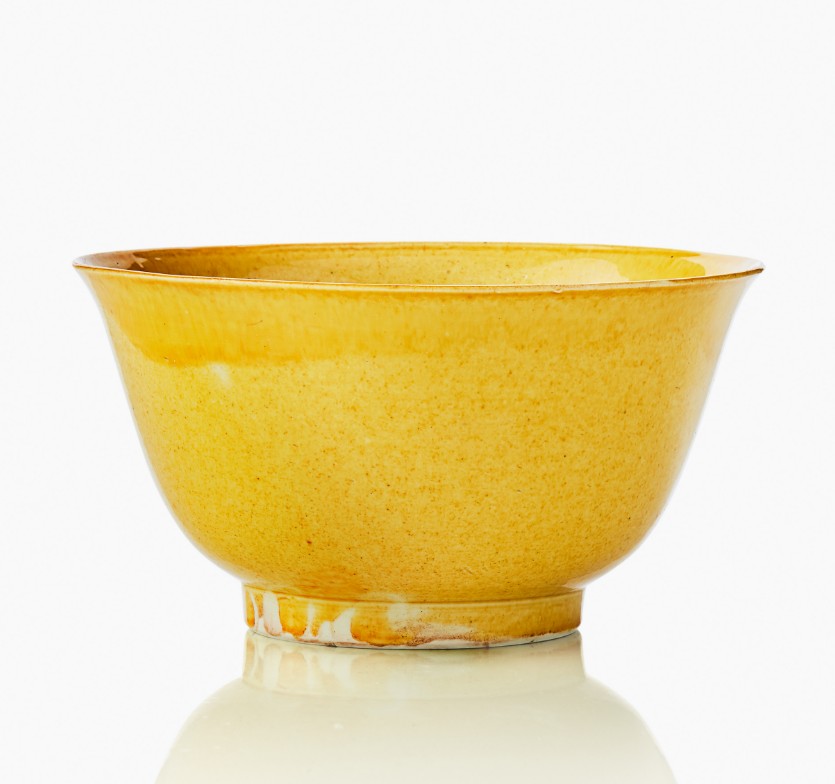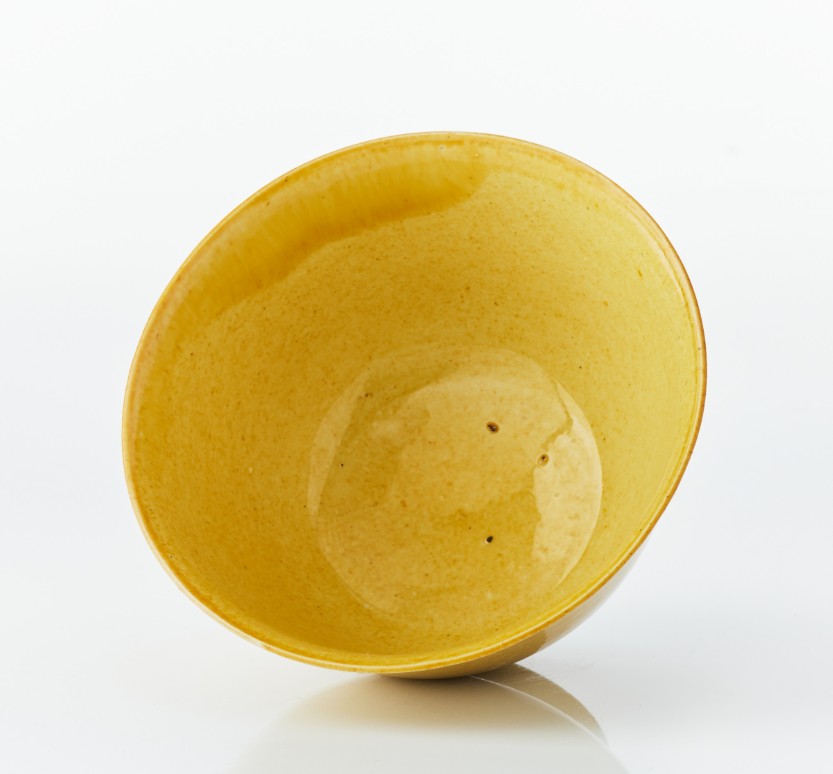A Fine Chinese Yellow-Glazed Porcelain Bowl-1






A Fine Chinese Yellow-Glazed Porcelain Bowl Of circular form with steep sides rising from a short foot to a slightly flared rim, covered overall in a rich and lustrous egg yolk-yellow glaze, pooling to a mustard tone and revealing the red body where it stops short of the foot, the recessed base with a six-character mark of Jiajing within a single circle in underglaze-blue. Period: mark and period of Jiajing (1522‑1566). Height: 6 cm, diameter: 12 cm. Yellow-glazed porcelain was first produced during the Xuande reign of the Ming dynasty. During the Ming and Qing dynasties, yellow glazes were either applied directly onto the unfired ceramic body - producing warmer, richer tones, as seen in the present example - or layered over a high-fired glaze to create a smoother finish. ’Imperial yellow’ wares held special significance, as Qing dynasty regulations restricted its use beyond the Imperial court. Its importance extended to ceremonial use as well, with yellow-glazed wares designated for imperial rituals at the Altar of Earth (Shejitan) in Beijing. Proveniens Formerly in the collection of Envoy Gustaf Oscar Wallenberg (1863-1937). Gustaf O. Wallenberg was a prominent Swedish businessman, diplomat, and politician. He served as Sweden’s Envoy to Tokyo from 1907 to 1918. In 1907, as Swedish Envoy Extraordinary and Minister Plenipotentiary, he travelled to Beijing to amend the Treaty of Canton from 1847 between Sweden-Norway and China, which was signed in 1908. During this time, he assembled a notable collection of Chinese works of art. Archival records at the Museum of Far Eastern Antiquities in Stockholm underscore his role in establishing formal relations between Sweden and the Qing Court, and highlight his connections with key figures of the time, such as Johan Gunnar Andersson (1874‑1960), Osvald Sirén (1879‑1966) and Orvar Karlbeck (1879‑1967).